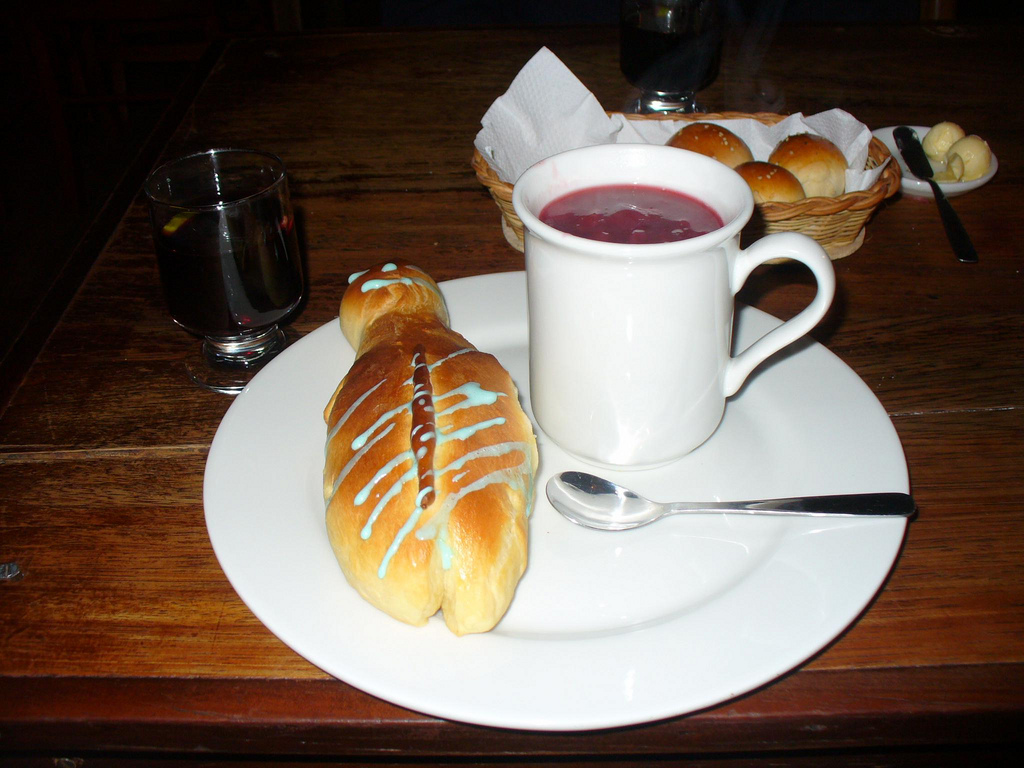|
Vaccinium Floribundum
''Vaccinium floribundum'', commonly known as mortiño or Andean blueberry, is a slender shrub that grows in the northern Andes in Bolivia, Colombia, Ecuador, Peru and Venezuela at elevations from . It can reach high or it can be dwarf and prostrate. The plant produces an edible fruit, a round berry that is bluish black and glaucous, that is collected and eaten raw and used in preserves. It is sold at some markets and is used for Colada Morada Colada Morada is a drink that is part of Ecuador's gastronomic culture along with t'anta wawa. It is a purple and thick liquid that is prepared with typical fruits of Ecuador, spices and corn flour. This drink is traditionally consumed on Novembe ... celebrating the Day of the Dead. References External links Photo of herbarium specimen at Missouri Botanical Garden, collected in Peru in 2012 floribundum Flora of South America Berries Plants described in 1819 {{Ericaceae-stub ... [...More Info...] [...Related Items...] OR: [Wikipedia] [Google] [Baidu] |
Carl Sigismund Kunth
Carl Sigismund Kunth (18 June 1788 – 22 March 1850), also Karl Sigismund Kunth or anglicized as Charles Sigismund Kunth, was a German botanist. He is known for being one of the first to study and categorise plants from the Americas, American continents, publishing ''Nova genera et species plantarum quas in peregrinatione ad plagam aequinoctialem orbis novi collegerunt Bonpland et Humboldt'' (7 vols., Paris, 1815–1825). Born in Leipzig, Kunth became a merchant's clerk in Berlin in 1806. After meeting Alexander von Humboldt, who helped him attend lectures at the University of Berlin, Kunth became interested in botany. Kunth worked as Humboldt's assistant in Paris from 1813 to 1819. He classified plants that had been collected by Humboldt and Aimé Bonpland during their journey through the Americas. When Kunth returned to Berlin in 1820, he became Professor of Botany at the University of Berlin, as well as the Vice President of the Berlin botanical garden. In 1829, he was ele ... [...More Info...] [...Related Items...] OR: [Wikipedia] [Google] [Baidu] |
Andes
The Andes, Andes Mountains or Andean Mountains (; ) are the longest continental mountain range in the world, forming a continuous highland along the western edge of South America. The range is long, wide (widest between 18°S – 20°S latitude), and has an average height of about . The Andes extend from north to south through seven South American countries: Venezuela, Colombia, Ecuador, Peru, Bolivia, Chile, and Argentina. Along their length, the Andes are split into several ranges, separated by intermediate depressions. The Andes are the location of several high plateaus—some of which host major cities such as Quito, Bogotá, Cali, Arequipa, Medellín, Bucaramanga, Sucre, Mérida, El Alto and La Paz. The Altiplano plateau is the world's second-highest after the Tibetan plateau. These ranges are in turn grouped into three major divisions based on climate: the Tropical Andes, the Dry Andes, and the Wet Andes. The Andes Mountains are the highest m ... [...More Info...] [...Related Items...] OR: [Wikipedia] [Google] [Baidu] |
Glaucous
''Glaucous'' (, ) is used to describe the pale grey or bluish-green appearance of the surfaces of some plants, as well as in the names of birds, such as the glaucous gull (''Larus hyperboreus''), glaucous-winged gull (''Larus glaucescens''), glaucous macaw (''Anodorhynchus glaucus''), and glaucous tanager (''Thraupis glaucocolpa''). The term ''glaucous'' is also used botanically as an adjective to mean "covered with a greyish, bluish, or whitish waxy coating or bloom that is easily rubbed off" (e.g. glaucous leaves). The first recorded use of ''glaucous'' as a color name in English was in the year 1671. Examples The epicuticular wax coating on mature plum fruit gives them a glaucous appearance. Another familiar example is found in the common grape genus (''Vitis vinifera''). Some cacti have a glaucous coating on their stem(s). Glaucous coatings are hydrophobic so as to prevent wetting by rain. Their waxy character serves to hinder climbing of leaves, stem or fruit by insec ... [...More Info...] [...Related Items...] OR: [Wikipedia] [Google] [Baidu] |
Colada Morada
Colada Morada is a drink that is part of Ecuador's gastronomic culture along with t'anta wawa. It is a purple and thick liquid that is prepared with typical fruits of Ecuador, spices and corn flour. This drink is traditionally consumed on November 2, souls' day or "days of the dead", along with the so-called t'anta wawa (bread usually of non-ordinary flavor and various fillings that has the shape of a doll, hence the name ) which are representations of the dead wrapped in a blanket. The origin of this drink dates back to pre-Columbian times, where the ancestral peoples related to harvest and planting as synonyms of life and death. Indigenous people from the Ecuadorian mountain range celebrated the rainy season and in turn worshipped their relatives who had died. Being the Colada Morada as a symbol of a happy journey from life to death. For the same reason, they exhumed their dead and shared with them this traditional drink. As a great example in which they celebrated with the col ... [...More Info...] [...Related Items...] OR: [Wikipedia] [Google] [Baidu] |
Day Of The Dead
The Day of the Dead ( es, Día de Muertos or ''Día de los Muertos'') is a holiday traditionally celebrated on November 1 and 2, though other days, such as October 31 or November 6, may be included depending on the locality. It is widely observed in Mexico, where it largely developed, and is also observed in other places, especially by people of Mexican heritage. Although related to the simultaneous Christian remembrances for Hallowtide, it has a much less solemn tone and is portrayed as a holiday of joyful celebration rather than mourning. The multi-day holiday involves family and friends gathering to pay respects and to remember friends and family members who have died. These celebrations can take a humorous tone, as celebrants remember funny events and anecdotes about the departed. Traditions connected with the holiday include honoring the deceased using calaveras and marigold flowers known as ''cempazúchitl'', building home altars called '' ofrendas'' with the favorite fo ... [...More Info...] [...Related Items...] OR: [Wikipedia] [Google] [Baidu] |
Vaccinium
''Vaccinium'' is a common and widespread genus of shrubs or dwarf shrubs in the heath family (Ericaceae). The fruits of many species are eaten by humans and some are of commercial importance, including the cranberry, blueberry, bilberry (whortleberry), lingonberry (cowberry), and huckleberry. Like many other ericaceous plants, they are generally restricted to acidic soils. Description The plant structure varies between species: some trail along the ground, some are dwarf shrubs, and some are larger shrubs perhaps tall. Some tropical species are epiphytic. Stems are usually woody. Flowers are epigynous with fused petals, and have long styles that protrude from their bell-shaped corollas. Stamens have anthers with extended tube-like structures called "awns" through which pollen falls when mature. Inflorescences can be axillary or terminal. The fruit develops from an inferior ovary, and is a four- or five-parted berry; it is usually brightly coloured, often being red or bluish wi ... [...More Info...] [...Related Items...] OR: [Wikipedia] [Google] [Baidu] |
Flora Of South America
Flora is all the plant life present in a particular region or time, generally the naturally occurring (indigenous) native plants. Sometimes bacteria and fungi are also referred to as flora, as in the terms '' gut flora'' or '' skin flora''. Etymology The word "flora" comes from the Latin name of Flora, the goddess of plants, flowers, and fertility in Roman mythology. The technical term "flora" is then derived from a metonymy of this goddess at the end of the sixteenth century. It was first used in poetry to denote the natural vegetation of an area, but soon also assumed the meaning of a work cataloguing such vegetation. Moreover, "Flora" was used to refer to the flowers of an artificial garden in the seventeenth century. The distinction between vegetation (the general appearance of a community) and flora (the taxonomic composition of a community) was first made by Jules Thurmann (1849). Prior to this, the two terms were used indiscriminately.Thurmann, J. (1849). ''Essai de ... [...More Info...] [...Related Items...] OR: [Wikipedia] [Google] [Baidu] |
Berries
A berry is a small, pulpy, and often edible fruit. Typically, berries are juicy, rounded, brightly colored, sweet, sour or tart, and do not have a stone or pit, although many pips or seeds may be present. Common examples are strawberries, raspberries, blueberries, blackberries, red currants, white currants and blackcurrants. In Britain, soft fruit is a horticultural term for such fruits. In common usage, the term "berry" differs from the scientific or botanical definition of a fruit produced from the ovary of a single flower in which the outer layer of the ovary wall develops into an edible fleshy portion (pericarp). The botanical definition includes many fruits that are not commonly known or referred to as berries, such as grapes, tomatoes, cucumbers, eggplants, bananas, and chili peppers. Fruits commonly considered berries but excluded by the botanical definition include strawberries, raspberries, and blackberries, which are aggregate fruits and mulberries, which are mul ... [...More Info...] [...Related Items...] OR: [Wikipedia] [Google] [Baidu] |
.jpg)



